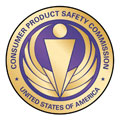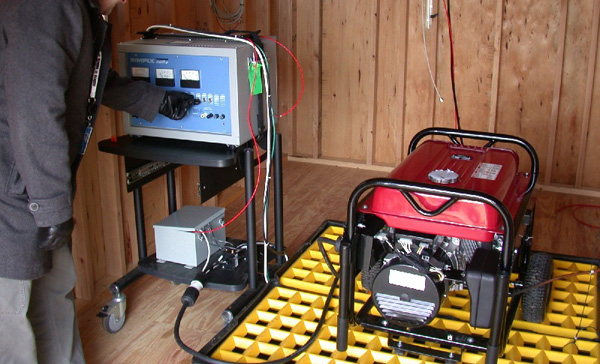 NEWS from CPSC NEWS from CPSC
U.S. Consumer Product Safety Commission
| Office of Communications |
Washington, D.C. |
FOR IMMEDIATE RELEASE
September 14, 2012
Release #12-278
|
CPSC Hotline: (800) 638-2772
CPSC Media Contact: (301) 504-7908
|
Escaping the Invisible Killer: New CPSC Research Demonstrates Technology That Can Significantly Reduce Poisonous Carbon Monoxide from a Generator
Consumers' escape time increased from eight minutes to 96 minutes
WASHINGTON, D.C. - A new study released today by the U.S. Consumer Product Safety Commission (CPSC) demonstrates that readily available technology can dramatically reduce deadly carbon monoxide (CO) emission rates from certain common portable gasoline-powered generators. The technology can provide additional critical time for consumers to recognize and escape from the deadly hazard of carbon monoxide poisoning. With the adaptation of existing emission control technology, CO rates can be lowered to levels that would save lives. On average, carbon monoxide from portable gasoline-powered generators kills more than 70 people every year.
CPSC staff’s study outlined one method to reduce the generator engine’s CO emission rate by using closed-loop electronic fuel injection and a small catalyst—the same emission control technology used on motor scooters and small motorcycles. This significantly increased the predicted escape time by twelve times the current time—from eight minutes to 96 minutes—for the deadly scenario when a consumer is in their garage while they are running their generator there.
CPSC's study also showed that the predicted escape time for those consumers inside the house, as opposed to the garage, was even greater. The escape time is the time between onset of obvious symptoms and incapacitation.
The CPSC continues to urge consumers to never run their portable generators in their attached garages, in or even near their houses, including avoiding placement outside near windows or vents. Generators should only be used outside, far away from homes. CPSC cautions that even if portable gasoline-powered generators were to incorporate this technology, they would still need to be used outside, far from the home. The technology does not make them safe for indoor use.
Another important line of defense against CO poisoning is having CO alarms on each level of the home and outside sleeping areas. Based on available alarm data 93 percent of CO-related deaths involving generators take place in homes with no CO alarms. Much like smoke alarms are designed to alert consumers about smoke or fires, CO alarms are designed to alert consumers to dangerous CO levels and give them time to get out of the house before becoming incapacitated.
Deaths involving portable generators have been on the rise since 1999 when generators became widely available to consumers. There have been at least 755 CO deaths involving generators from 1999 through 2011. While reporting of incidents for 2011 is ongoing, there were at least 73 CO related deaths involving generators last year.
Generators are responsible for the largest number of estimated non-fire CO deaths associated with consumer products. From 2006 through 2008, generators accounted for 43 percent of CO deaths compared to 33 percent for heating systems, such as furnaces. Furnaces had historically been responsible for the most CO deaths.
Generators are used by consumers to keep lights, electrical appliances or heating and cooling units running in their homes during power outages. Incapacitation or death can occur within minutes if consumers use a generator inside a home, garage, shed or use it outside near windows or vents, because dangerous levels of CO from a generator’s fuel-burning engine build up quickly.
With the release of this study, CPSC is urging manufacturers to voluntarily adopt a stringent CO emission standard for engines used in portable gasoline-powered generators with the expectation that it will improve safety and save lives, just as the marine industry did in 2005. That year, manufacturers of small marine generator engines, voluntarily adopted a stringent CO emission standard to address the hazard of acute poisoning that was causing fatal and serious injuries to boaters exposed to marine generator engine exhaust.
For this study, CPSC worked with the National Institute of Standards and Technology (NIST) and the University of Alabama to develop and test the portable gasoline-powered generators.
 Generator being tested in an enclosed space. Source: NIST
Generator being tested in an enclosed space. Source: NIST |